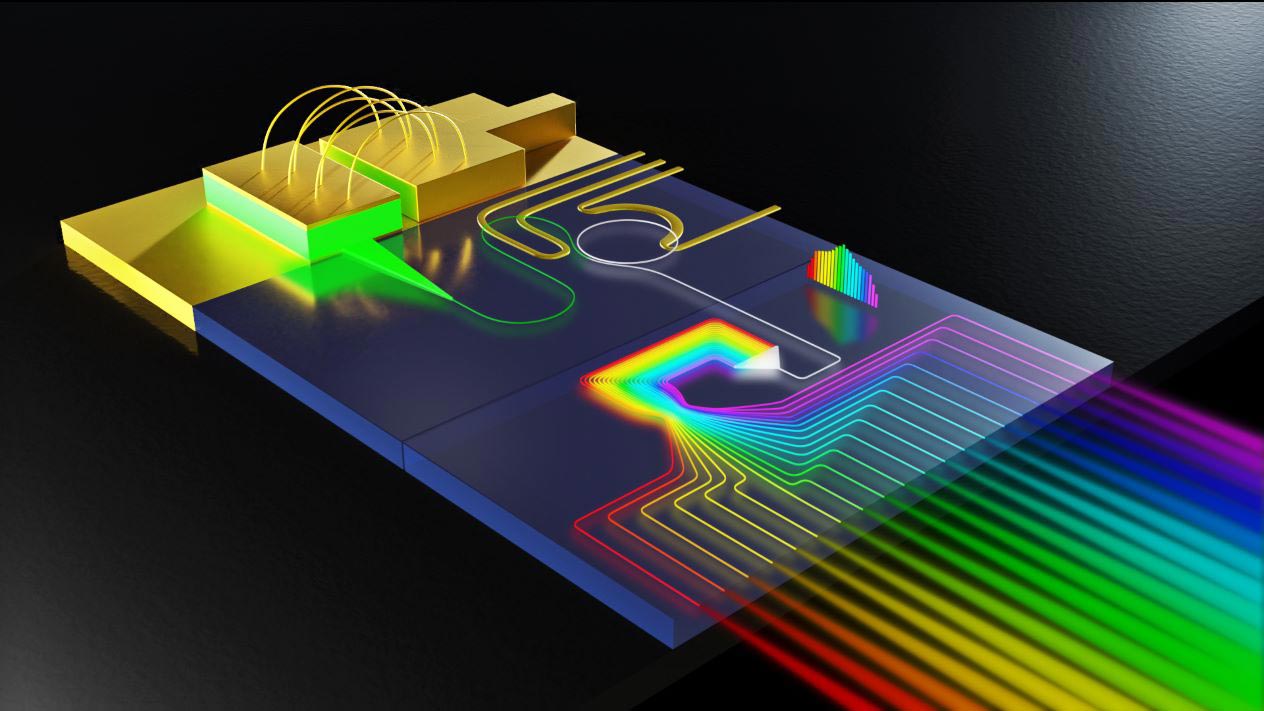💥 They accidentally build a laser chip generating all the colors of the rainbow
Follow us on Google News (click on ☆)
The team at Michal Lipson's laboratory initially sought to develop chips capable of producing more intense light beams for LiDAR applications. By gradually increasing the power passing through their devices, they noticed the spontaneous appearance of a frequency comb. This particular light structure consists of multiple perfectly spaced colors, similar to the regular teeth of a comb. Each light frequency can carry its own data stream without interference with others, thus multiplying transmission capabilities.

Diagram illustrating the diffractive element spectrally separating the lines of the high-power frequency comb
Credit: Michal Lipson Laboratory
Until now, generating powerful frequency combs required bulky and expensive laser systems. The team's innovation lies in the complete integration of this functionality on a simple photonic chip. Andres Gil-Molina, former postdoctoral researcher in the laboratory, emphasizes that this technology perfectly meets the growing needs of data centers. It allows replacing entire racks of individual lasers with a single compact device, offering significant gains in terms of energy efficiency and space requirements.
The main technical challenge was to master the light produced by multimode laser diodes, known for their power but also their lack of coherence. The researchers developed a locking mechanism exploiting the properties of silicon photonics to purify and stabilize the light beam. Once this step was accomplished, the chip's nonlinear optical properties come into play, dividing the single beam into multiple perfectly spaced colors.
This breakthrough comes at the right time given the explosion in data processing needs, particularly with the development of artificial intelligence. Modern data centers already use fiber optic links, but most still operate with single-wavelength lasers. Frequency comb technology allows dozens of parallel beams to circulate in the same fiber, applying the principle of wavelength division multiplexing that transformed the Internet in the 1990s.
Potential applications extend far beyond telecommunications. These compact photonic chips could equip portable spectrometers, high-precision optical clocks, miniaturized quantum devices and... improved LiDAR systems. Michal Lipson considers this achievement as an important milestone in the development of silicon photonics, a technology becoming essential to our daily digital infrastructure.